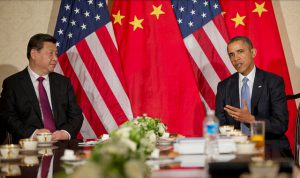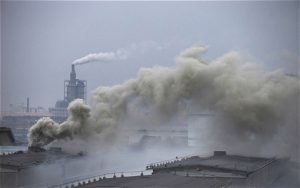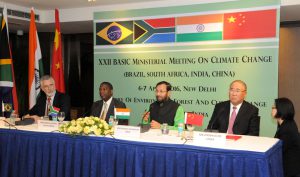In a joint statement issued on March 31 during Chinese president Xi Jinping’s US visit, the two countries have confirmed that they will sign the Paris Agreement at the UN summit held on April 22 in New York.
A strong signal to other countries
In the final text of the statement, the two countries pledged that, “they will take all necessary domestic steps to join the Paris Agreement as soon as possible within this year.”
The move encourages other signatories of the treaty to take similar action so that the Paris Agreement can take effect at the earliest opportunity.
At least 55 countries contributing to at least 55% of all global carbon emissions are required to sign the agreement to bring it into force. Analysts say the China-US statement will foster greater support for the agreement in the days leading up to the New York meeting.
Zou Ji, deputy director of the National Center for Climate Change Strategy and International Cooperation, praised the example set by the two countries.
“The joint statement is a good thing, both for Sino-US relations and for the global effort to combat climate change. The confirmation of China and the US to sign the treaty will no doubt send a positive signal to other countries to follow suit, so that the agreement can be implemented promptly,” said Zou.
No turning back
The joint statement sends another important message, that the two leaders will take measures to mobilise public resources in their own countries in order to boost the development of low-carbon technologies.
“The continued efforts of both countries to steer investment flows away from carbon-intensive technologies, like coal, and toward renewable energy alternatives is particularly significant,” said Alden Meyer, director of strategy and policy at the Union of Concerned Scientists, a non-profit advocacy group based in the US.
Jiang Kejun, senior researcher at the Energy Research Institute, part of China’s National Development and Reform Commission, emphasised that policies aimed at curtailing investment into highly polluting industries should be made irreversible.
“Inefficient and wasteful investments over the past eight years have turned out to be a heavy burden on China’s economy and from now on, we should never allow the recurrence of such inefficient investment,” he said.
“Our research has indicated that it is dangerous not to advance along the low-carbon pathway. Low-carbon development is the most cost-effective and most beneficial path for the country’s growth. We should resolutely press ahead along this line,” Jiang stressed.
Time to aim big
Jiang observed that China’s current priority is to implement a concrete action plan to ensure its commitments within the Paris Agreement framework are honoured.
In order to realise this goal, China needs to vigorously promote a comprehensive upgrade of its domestic energy and environmental sectors, and set even more challenging targets than go further than the requirements of the Paris Agreement, said Jiang.
“We hope China’s emissions can peak in the period 2020 to 2022; carbon intensity levels can be cut down by 65%-70% or more; and the proportion of renewables in the total energy mix should reach at least 25%,” Jiang predicted.
At the Paris climate conference in December, China reiterated a commitment to peak its carbon emissions by 2030 (first made by president Xi at a meeting with president Obama in November 2014).
In Paris, China also pledged to lower its carbon intensity level by 60-65% against a 2005 baseline; and increase the proportion of non-fossil fuels in its energy mix to 20% by 2030.
Zou agrees that China can meet its peak carbon target before the 2030 deadline.
“Even though the 13th Five-Year Plan didn’t set a specific carbon intensity target against a 2005 baseline, our estimation is that the new target should actually bring down the country’s carbon intensity by 48-50%, from 2005 levels, before 2020. This will be a much more ambitious pathway compared with the 40-45% range pledged by China in Cancun,” Zou suggested, referring to the 2010 UN climate conference held in Mexico.
Eyes on Hangzhou
The next opportunity for China and the US to demonstrate their leadership in the global effort to combat climate change will be at the G20 summit in Hangzhou this September. The two presidents have pledged “vigorous achievements in climate and clean energy cooperation.”
“Given China’s current leadership role in the G20, the call for strong climate and clean energy outcomes at the Hangzhou summit is particularly significant, though much work remains to be done to achieve positive outcomes at the meeting,” Alden Meyer pointed out.
The joint statement is the third of its kind issued by the world’s top two carbon emitters. Together, the US and China account for around 40% of the world’s total emissions.
The Obama administration’s domestic strategy to curb carbon emissions is represented in the Clean Power Plan. The plan is designed to cut emissions by 32% before 2030 and greatly boost the development of renewables. But the US Supreme Court has halted the implementation of the plan until all the legal obstacles are cleared.
With contributions from Yu Jie, Monica Wang and Feng Hao.






